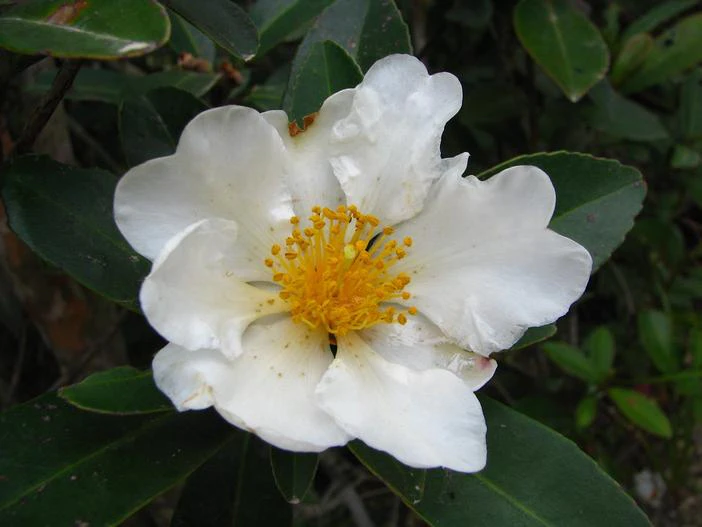Fried Egg Plant
(Gordonia axillaris)
Fried Egg Plant (Gordonia axillaris)
/
/

Stewart vs Stewart
CC BY-SA 2.0
Image By:
Stewart vs Stewart
Recorded By:
Copyright:
CC BY-SA 2.0
Copyright Notice:
Photo by: Stewart vs Stewart | License Type: CC BY-SA 2.0 | License URL: https://creativecommons.org/licenses/by-sa/2.0/ | Uploader: Stewart vs Stewart | Publisher: Flickr


















Estimated Native Range
Climate Requirements for Peabody, Massachusetts
| This Plant | Your Site | Plant Suitability for Your Location | ||
|---|---|---|---|---|
| • Precipitation | 45" - 171" | 44" | Aquatic | Aquatic |
| • High Temp. | 70°F - 92°F | 83°F | Your summer temperatures are normal for this plant. | Excellent |
| • Low Temp. | 35°F - 64°F | 18°F | Your winter temperatures may be too cold for this plant | Too cold |
This plant should grow well at your location with about N inches per year (Y minutes per month) of irrigation.
Summary
Gordonia axillaris, commonly known as Fried Egg Plant, is an evergreen tree or shrub native to forest margins, open woodlands, and hillsides in Southeast Asia. It typically grows up to 9 meters tall and is characterized by its distinctive flowers and peeling bark. The flowers, which bloom from late fall to early spring, are large, showy, and resemble a fried egg due to their white petals and central cluster of bright yellow anthers. They emit a pleasant fragrance, attracting pollinators such as bees and butterflies. The brown bark of Gordonia axillaris peels off in large, smooth pieces, revealing a lighter underbark, and the fruit resembles a green acorn.
The Fried Egg Plant is valued for its ornamental flowers, which drop from the tree intact before wilting, creating a unique ground display. It is used in gardens and landscapes for erosion control due to its ability to stabilize slopes, and it is also planted as a specimen tree or in mixed borders for its aesthetic appeal. Gordonia axillaris requires full sun to part shade, consistent medium moisture, and well-drained soils to thrive. While it is not commonly afflicted by serious pests or diseases, it may suffer from root rot in poorly drained soils. This species is not typically invasive but should be monitored when planted outside its native range to ensure it does not become problematic.CC BY-SA 4.0
The Fried Egg Plant is valued for its ornamental flowers, which drop from the tree intact before wilting, creating a unique ground display. It is used in gardens and landscapes for erosion control due to its ability to stabilize slopes, and it is also planted as a specimen tree or in mixed borders for its aesthetic appeal. Gordonia axillaris requires full sun to part shade, consistent medium moisture, and well-drained soils to thrive. While it is not commonly afflicted by serious pests or diseases, it may suffer from root rot in poorly drained soils. This species is not typically invasive but should be monitored when planted outside its native range to ensure it does not become problematic.CC BY-SA 4.0
Plant Description
- Plant Type: Tree
- Height: 8-20 feet
- Width: 10-12 feet
- Growth Rate: Moderate
- Flower Color: Yellow, White
- Flowering Season: Fall, Winter, Spring
- Leaf Retention: Evergreen
Growth Requirements
- Sun: Full Sun, Part Shade
- Water: Medium
- Drainage: Medium
Common Uses
Bee Garden, Bird Garden, Butterfly Garden, Fragrant, Hedges, Hummingbird Garden, Low Maintenance, Showy Flowers
Natural Habitat
Forest margins, open woodlands, and hillsides in Southeast Asia
Other Names
Common Names:
Scientific Names: Gordonia axillaris
GBIF Accepted Name: Gordonia axillaris Szyszył.